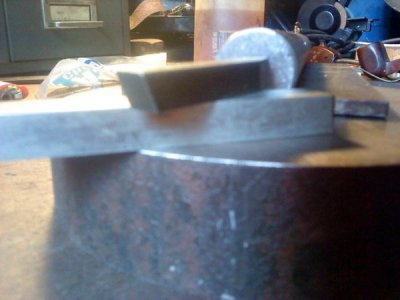I use several methods depending upon the desired accuracy.
The easiest is to set up two vee blocks with clearance for the drill between them so the center of the vee is directly under the spindle. The vee blocks can be fairly well centered by laying two parallels in the vee, putting a pin in the chuck and adjusting the position of the block until the pin touches both sides of the parallels equally. Rotate the spindle if you have runout in the spindle. Clamp the vee blocks in position. Remove the parallels, place the part in the vee, and drill through. If there is a clearance hole in the center of your vee block, it can be done with a single block and no parallels. For best sensitivity, I use a 1/2" pin.
For more accuracy, I indicate the fixed jaw of my milling vise with my edge finder and offset half the diameter of the part. Alternatively, if the part diameter is large enough, I mount the part in the vise and locate the position of both jaws and average the position readings to get the center position. This works well with my DRO's as they both have an averaging feature.
In either case, use a center drill or spotting drill and allow the drill point to find its center. This is especially important with round stock as there is a big tendency to slip off to the side.
Finally, if a one off fit for a shaft and bushing, I will sometimes drill the hole slightly undersized, assemble the two parts, and finish drilling as a set.

